Common name: great spotted woodpecker
Scientific name: Dendrocopos major
Family: Picidae (woodpeckers)
Habitat: woodland, parks and gardens
Diet: insects, tree seeds, young birds and eggs
Predators: sparrowhawk and goshawk
Origin: native
Not afraid to make itself heard. The great spotted woodpecker is equipped with a toolkit that makes it a true woodland specialist. Its strong beak and shock-absorbing skull are perfect for finding food and making its home among the trees.
Common name: great spotted woodpecker
Scientific name: Dendrocopos major
Family: Picidae (woodpeckers)
Habitat: woodland, parks and gardens
Diet: insects, tree seeds, young birds and eggs
Predators: sparrowhawk and goshawk
Origin: native
Great spotted woodpeckers have white cheeks with black lines underneath and a black cap. Males can be identified by a red patch on the back of the neck. The beak is thick and powerful.
They have a pale breast with black upper parts, and a bright red rump. Their wings are black with white spots. Great spotted woodpeckers are not as large as many people imagine, being slightly smaller than a blackbird on average.
Not to be confused with: the lesser spotted woodpecker, which is much smaller (roughly sparrow-sized) and has distinctive white stripes on its back.
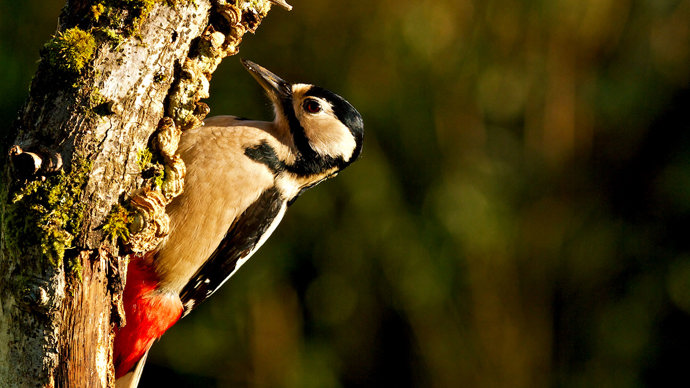
Credit: Tony Cox / WTML
Insects are the great spotted woodpecker's main prey. It uses its powerful beak to hammer holes in tree bark and then extracts beetle larvae with its long, flexible tongue. Caterpillars, adult beetles and spiders are also taken. In spring, the chicks and eggs of smaller birds are often eaten. Species that nest in tree cavities are targeted as woodpeckers can use their beaks to access these spaces. Nuts and seeds are also an important food source, particularly in winter.
Woodpeckers will sometimes drum on man-made structures such as pipes and telegraph poles.
The great spotted woodpecker’s beak plays a key role in its breeding behaviour. Males use it to hammer against dead trees, making a drumming sound. This proclaims ownership of its territory, warning off any rivals. Such activity would cause brain damage among most birds, but woodpeckers have a shock-absorbing skull that means they are not affected by the impact.
The beak is also used to excavate a nesting cavity within a tree. Once the hole is ready, four to six eggs are laid inside in April or March. They hatch after around two weeks and chicks spend just over three weeks in the nest before fledging.
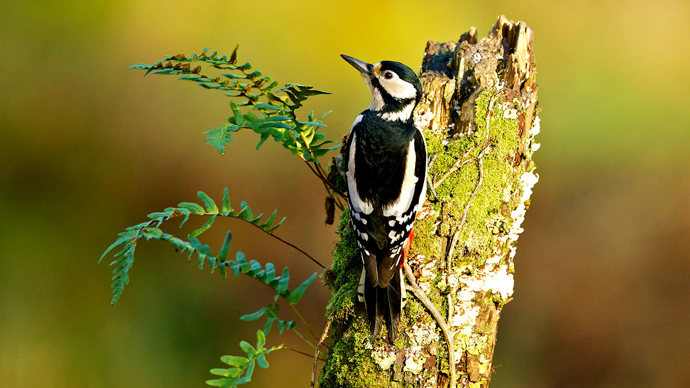
Credit: Tony Cox / WTML
Great spotted woodpeckers can be found across mainland Britain, but are limited to the west of Ireland. Mature broadleaved woodland is prime habitat, but great spotted woodpeckers can occur in coniferous woodland and parks or gardens with plenty of mature trees.
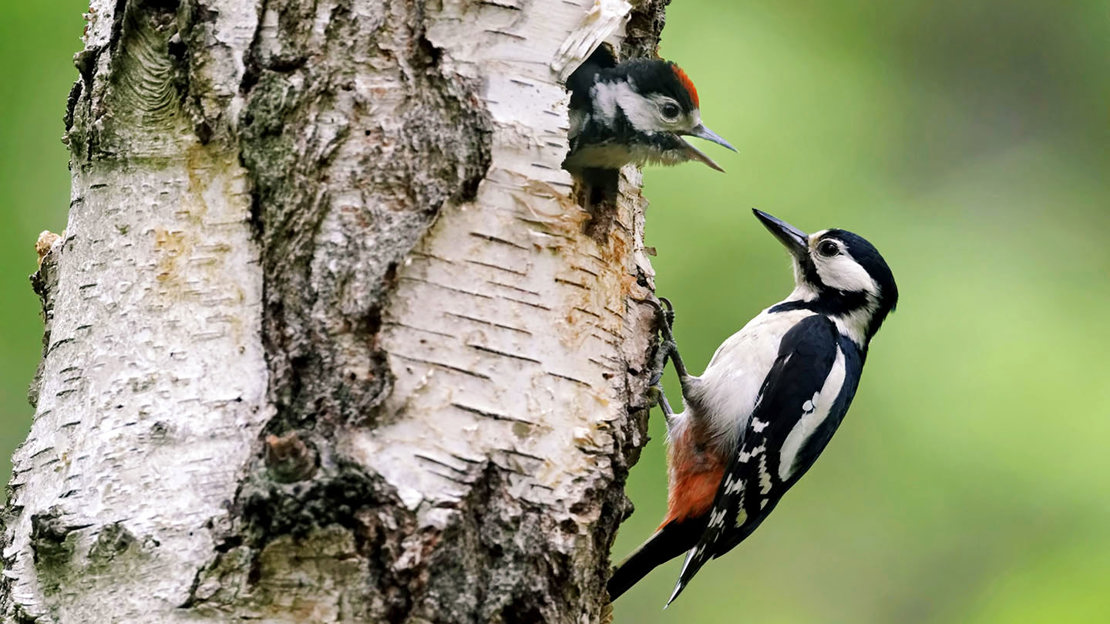
A great spotted woodpecker’s tongue is so long that it has to wrap around the bird’s skull when not in use.
Listening out for the great spotted woodpecker’s distinctive drumming is the easiest way to tell if the species is around. You might also see the holes woodpeckers have made in tree trunks when hunting.
Sightings in woodland are often fleeting, as these birds can be shy of humans. The best views are often available in gardens, where woodpeckers are attracted to feeders containing nuts, seeds and suet.
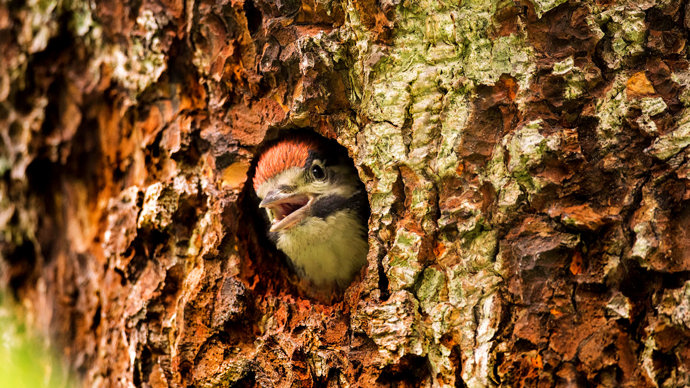
Credit: Abi Warner / Alamy Stock Photo
The great spotted woodpecker population is doing well and has increased by more than 300% since the 1970s. It’s thought the species may have benefited from an increase in dead wood caused by Dutch elm disease, as well as the availability of food in gardens. As this species relies on mature trees and woodland, it’s important that these habitats are protected to safeguard the great spotted woodpecker’s future.
Scientists have studied the woodpecker’s skull in a bid to develop better protective headgear for humans.
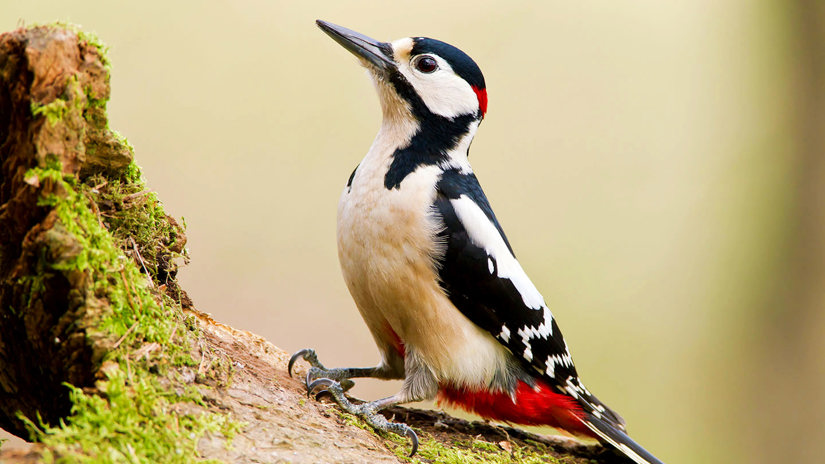
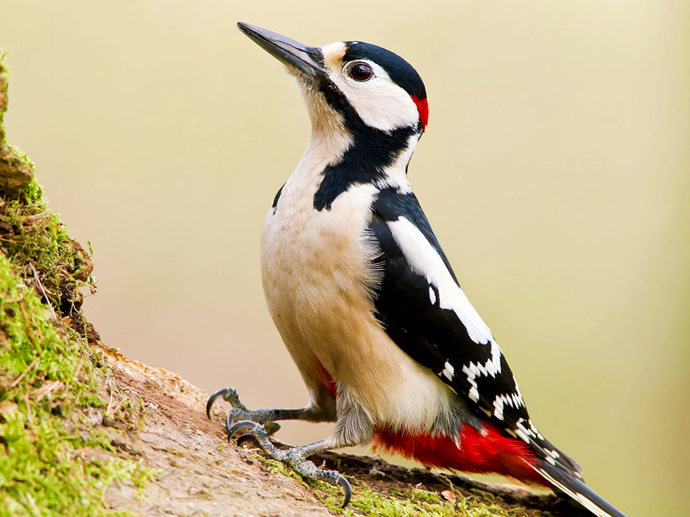
Amy Lewis • 30 Sept 2021
Learn to tell the difference between Britain's three resident woodpecker species with our quick guide to their appearance, sounds and behaviour.